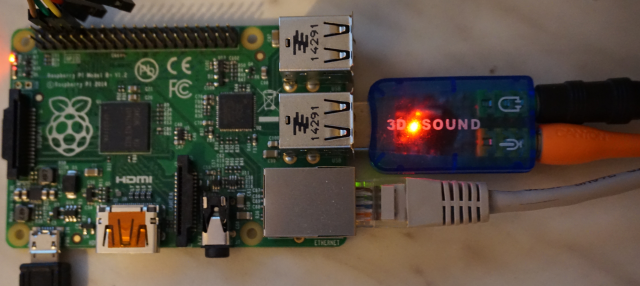Ecosyste.ms: Awesome
An open API service indexing awesome lists of open source software.
https://github.com/pingec/parrot-vox
Listens for sounds and automatically replays them like a parrot, in a loop with a web interface and customizable settings.
https://github.com/pingec/parrot-vox
Last synced: 14 days ago
JSON representation
Listens for sounds and automatically replays them like a parrot, in a loop with a web interface and customizable settings.
- Host: GitHub
- URL: https://github.com/pingec/parrot-vox
- Owner: pingec
- Created: 2015-05-03T18:39:54.000Z (over 9 years ago)
- Default Branch: master
- Last Pushed: 2018-09-01T21:12:38.000Z (about 6 years ago)
- Last Synced: 2024-08-01T19:37:26.534Z (3 months ago)
- Language: JavaScript
- Size: 727 KB
- Stars: 2
- Watchers: 1
- Forks: 1
- Open Issues: 0
-
Metadata Files:
- Readme: readme.MD
Awesome Lists containing this project
README
parrot-vox
============
Listens for sounds, records them and automatically plays them back.
**Wraps the sox utility internally, so make sure you have sox installed on your system**
**This app is far from finished it and is closer to a prototype than a finished product! YMMV**


This setup was tested to be working on the following setup:
Raspberry Pi B+ running Raspbian GNU/Linux 7 (wheezy)
Linux raspberrypi 3.18.7+ #755 PREEMPT Thu Feb 12 17:14:31 GMT 2015 armv6l GNU/Linux
Using an external usb sound card (1908:2070 GEMBIRD) but any C-Media CM108 and similar should work fine.
## Configuration
- Some things can be changed via the web interface (everything in config.json), other are hardcoded in code. You might have to modify the paths in code.
- To make the external usb audio card the default one change /etc/modprobe.d/alsa-base.conf set:
```bash
options snd-usb-audio index=0
```
- Ensure you have sox installed and "rec"/"play" commands are globally available.
- Run with "node main.js" and then browse to device's ip address and port 8080.
If you're using a Raspberry Pi and notice the output isnt totally clean, some USB Audio adapters don't like USB-1.2 and produce crackling in the output. You can work around the problem by adding dwc_otg.speed=1 to /boot/cmdline.txt and setting the USB ports to USB-1.1 mode.
## config.json example
```js
{
"start-threshold": 2,
"stop-threshold": 2,
"duration-start": 5,
"duration-stop": 2,
"duration": 20,
"input-gain": 100,
"output-volume": 100,
"input-boost": 1,
"output-boost": 1
}
```
## Appendix: sox syntax explanation
```bash
silence [ -l ] above_periods [ duration threshold[d|%] ] [ below_periods duration threshold[d|%] ]
```
```bash
rec recording.wav silence 1 5 2% 1 0:00:02 2%
```
- **1** - above-periods (start recording when non-silence is detected) TREAT AS CONSTANT
- **5** - duration (amount of SAMPLES that non-silence must be detected for before starting recording, you can also specify time instead number of samples, eg. use '2t' for 2 seconds or '0:00:02' syntax also works)
- **2%** - threshold (what is treated as silence and what not when determining when to start recording)
- **1** - below-periods (stop recording when silence is detected) TREAT AS CONSTANT
- **0:00:02** - duration (amount of time of non-silence before recording is stopped, same formatting options are available as for duration parameter above)
- **2%** - threshold (what is treated as silence and what not when determining when to stop recording)